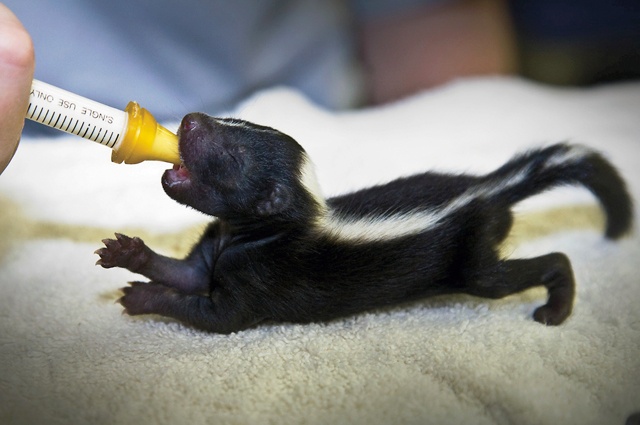Discover Specialist Providers in Wildlife Rescue Burlington for Citizen Animals
Discover Specialist Providers in Wildlife Rescue Burlington for Citizen Animals
Blog Article
Effective Wildlife Removal Strategies for a Peaceful Home Atmosphere
In the quest of keeping a tranquil living space, homeowners often face the obstacle of wild animals intrusions, which can interfere with the serenity of their setting. Carrying out efficient wild animals removal strategies requires a nuanced understanding of both humane exemption methods and preventative measures.
Identifying Common Wild Animals Intruders
Identifying typical wild animals trespassers is an essential initial step in efficient wild animals administration. Recognizing the particular species that regularly infiltrate residential and industrial areas enables homeowner and wild animals professionals to carry out targeted strategies for minimizing potential damage and wellness risks. Common trespassers usually include raccoons, squirrels, bats, and numerous varieties of birds and rodents, each bringing special obstacles.
Raccoons, for instance, are recognized for their mastery and can trigger substantial architectural damage while seeking food or shelter. Squirrels, with their tendency for gnawing, can harm electric circuitry, posing fire risks. Bats, while valuable for controlling insect populations, can end up being an annoyance when they roost in attic rooms, possibly spreading out conditions such as histoplasmosis. Birds, consisting of pigeons and sparrows, typically produce unhygienic problems with their droppings, causing structural degradation and health and wellness issues. Rats, such as rats and computer mice, are infamous for their quick reproduction and ability to infiltrate tiny openings, posturing significant wellness risks due to their ability to spread conditions.
Humane Exemption Methods
Recognizing the common wildlife burglars is the structure upon which reliable exclusion strategies are built. Recognizing varieties such as raccoons, squirrels, and birds aids in creating humane exemption methods customized to certain behaviors and access methods. Exemption is a preventative method targeted at rejecting wild animals access to residential or commercial properties and homes, hence minimizing the need for even more invasive actions.
The foundation of humane exclusion entails sealing prospective access points. This consists of repairing holes in walls, structures, and roofing systems, in addition to installing smokeshaft caps and air vent covers. For smaller sized invaders like mice and bats, making use of products such as steel woollen and caulk to seal spaces is crucial. Additionally, making sure that doors and home windows are safe and secure, and that screens are intact, can additionally hinder access.
Setting up motion-activated lights or ultrasonic gadgets can dissuade nocturnal wild animals. These exemption techniques not only protect the home setting however likewise respect the wild animals, permitting them to grow in their all-natural habitats without injury.
Safe Trapping Methods
When exclusion techniques are insufficient, secure trapping approaches end up being a needed option in wildlife monitoring. Trapping, when executed appropriately, provides a humane and effective means of addressing a prompt wildlife trouble while guaranteeing marginal stress and anxiety and damage to the animal. This method calls for an understanding of both the behavior of the target varieties and the ethical factors to consider associated with wild animals handling.
These traps should be examined regularly to stop undue tension or injury to the caught wild animals. It is crucial to follow regional laws relating to capturing and moving to make certain compliance with legal standards and wildlife conservation concepts.
In addition, bait choice and positioning are critical parts in guaranteeing successful trapping. Bait ought to be selected based upon the nutritional choices of the target varieties and purposefully positioned to tempt the pet right into the catch. When caught, the animal should be managed with treatment, utilizing safety gear if needed, to help with secure transportation and release, thus maintaining a relaxed home and a well balanced community environment.
Preventative Home Modifications
While secure trapping approaches address prompt wild animals concerns, long-lasting options often entail preventative home adjustments to prevent pets from getting in human spaces. Executing these adjustments not only enhances the safety and security and convenience of your living environment yet also decreases the chance of future wild animals intrusions.
A vital facet of preventative approaches is securing potential entry points. This includes checking and fixing any kind of voids or my sources cracks in the foundation, walls, and roofing, as these can end up being accessibility courses for wild animals.
Landscape design modifications can also work as efficient deterrents. Trimming tree branches that overhang the roofing system and removing debris stacks can eliminate routes and habitats that bring in wild animals. Keeping a tidy lawn by safeguarding garbage can and compost heap dissuades scavengers such as opossums and raccoons.

When to Call Professionals,##.
Specialist treatment comes to be essential in situations where wildlife issues exceed the range of DIY options. House owners might run into conditions where the intricacy or risk of the wildlife problem necessitates professional know-how.
In addition, problems entailing safeguarded or jeopardized varieties need a nuanced method to abide by lawful laws. Experts are geared up with the required permits and recognize the lawful frameworks governing the handling of such varieties. This makes certain that elimination is carried out fairly and within legal borders.

Last but not least, when wildlife postures a persistent trouble despite repeated DIY initiatives, my website specialist services can provide thorough examination and long-term solutions customized to avoid reappearance - burlington wildlife rescue. Their know-how not only deals with the immediate issue however also safeguards the home environment in the future
Conclusion
Carrying out efficient wild animals elimination methods is vital for preserving a serene home environment. With each other, these approaches develop a harmonious living space free from wild this website animals disturbances.

These exclusion approaches not only safeguard the home setting yet also appreciate the wild animals, permitting them to flourish in their natural environments without injury.
Implementing efficient wild animals removal methods is essential for maintaining a serene home setting.
Report this page